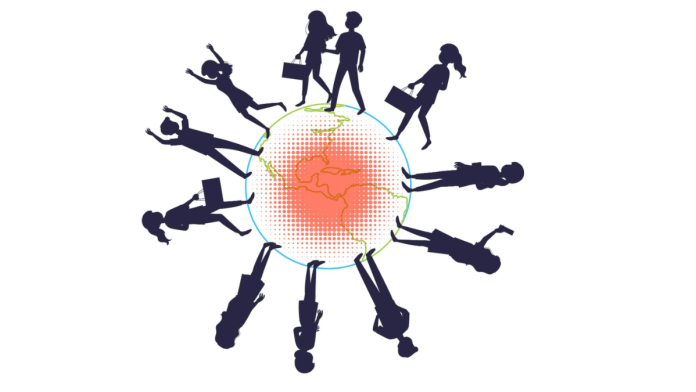Thank you dear subscribers, we are overwhelmed with your response.
Your Turn is a unique section from ThePrint featuring points of view from its subscribers. If you are a subscriber, have a point of view, please send it to us. If not, do subscribe here: https://theprint.in/
The Monsoon That Shows Two Worlds
When the monsoon clouds gather, many of us pause to admire the streaks of grey across the sky, the thunder’s rumble, the rhythm of raindrops on rooftops. Some even step out to click a picture of that majestic skyline. Meanwhile, in another world just beyond our gated boundary or our well-drained street, water is creeping into someone’s bedroom.
This year, India has watched disasters ripple across states, creating headlines in some places while leaving other tragedies in the shadows. From cloudbursts in Uttarakhand to dramatic flooding in Punjab, and the underreported deluge in parts of Haryana and Bihar, the gap in visibility mirrors the gap in privilege.

A Nation Drowned in Loss
In 2025, floods have claimed hundreds of lives and displaced thousands. In Punjab, at least 51 people died, 1,900 villages were submerged, and 400,000 acres of farmland were ruined¹. More than 384,000 people were impacted across seven districts¹.
In Uttarkashi, Uttarakhand, a flash flood (triggered by a cloudburst or glacial outburst) killed at least 5 people, left over 50 missing, and swept away homes². In Kishtwar, Jammu & Kashmir, a cloudburst-led flood left dozens feared dead and many evacuated³.
Kolkata too faced devastation. An intense cloudburst on 23 September caused 12 confirmed deaths, with 9 in the city itself, along with 30 injuries and two missing persons⁴.
Altogether, the flood season of 2025 has extinguished hundreds of lives, rendered thousands homeless, and submerged crops worth crores. In Dehradun alone, 32 people died and damages crossed ₹211 crore⁵. In Marathwada, 52 lives were lost, 12.8 lakh hectares of crops damaged, and nearly 3,000 homes destroyed⁶.
Beyond human toll, the loss of resources is staggering. Fertile land washed away, livestock drowned, and critical infrastructure collapsed. In Punjab, 3,200 schools and 19 colleges were damaged, and about 1,400 clinics ruined⁷. Such devastations take years to tally and even longer to rebuild.
Privilege in Plain Sight
When we read headlines about floods in “Punjab” or “Uttarakhand,” many of us imagine far-off villages. Rarely do we reflect on how close these victims are to our lives. Because in cities, we escape the worst — with drainage, backup electricity, and strong walls. Our inconvenience is a detour or a delayed evening. For others, it is the destruction of their only shelter.
In our comfortable homes, we grumble about a power cut, knowing inverters will hum back soon. Outside our windows, families may be watching water flood their beds. We vent at a blocked drain; they panic as whole rooms drown.
This is not just inequality — it is the everyday gap magnified by nature. Disasters do not strike equally. The privileged are shielded; the underprivileged are exposed.

From Political Theatre to Human Accountability
Some floods get “celebrity treatment.” In Punjab, the political announcements, relief packages, and promises of seed distribution⁷. Yet in Bihar, equally damaging floods barely made headlines.
In Bihar, when homes were drowning, political fights over “vote chori” dominated news cycles.
This selective visibility creates selective accountability. Where cameras linger, leaders act. Where stories remain invisible, suffering becomes anecdotal.
A Call to Reframe the Monsoon Through Humanity
To live as the privileged in an underprivileged society is to accept fragility as someone else’s norm. The skies do not discriminate — but our systems do. And when the skies break, inequality becomes stark.
We must shift our gaze. Not ask: “How bad is the flood?” but “Whose world is it destroying? Whose voice are we not hearing?”
Natural disasters must be seen as mirror-events — reflecting how we design cities, distribute wealth, and value lives. We need disaster systems that prevent tragedies, not just relief camps after the fact. Reporting must not privilege populous districts alone. Infrastructure must uplift margins: drainage in villages and safe shelters in every district.
In the seasons ahead, when clouds darken, I will still stop to photograph the sky. But I will pause and ask: Which windows are under water tonight? Whose home is drowning? Because real privilege is not just living above floodwaters — it is lifting others above their deluge.

Sources
¹ Mongabay India – Lives, homes and crops lost as Punjab faces the worst flood in decades (Sept 2025)
² Wikipedia – 2025 Uttarakhand flash flood
³ Wikipedia – 2025 Kishtwar district flash flood
⁴ Wikipedia – September 2025 Kolkata cloudburst
⁵ Times of India – Dehradun rains: Admin pegs losses at ₹211 crore, 32 deaths (Sept 2025)
⁶ Times of India – With 52 deaths, Marathwada records highest rain-related fatalities in a decade (Sept 2025)
⁷ Times of India – Punjab to provide 2 lakh quintal free wheat seeds to flood-affected farmers (Sept 2025)
⁷ Times of India – Punjab to provide 2 lakh quintal free wheat seeds to flood-affected farmers (Sept 2025)
These pieces are being published as they have been received – they have not been edited/fact-checked by ThePrint.


